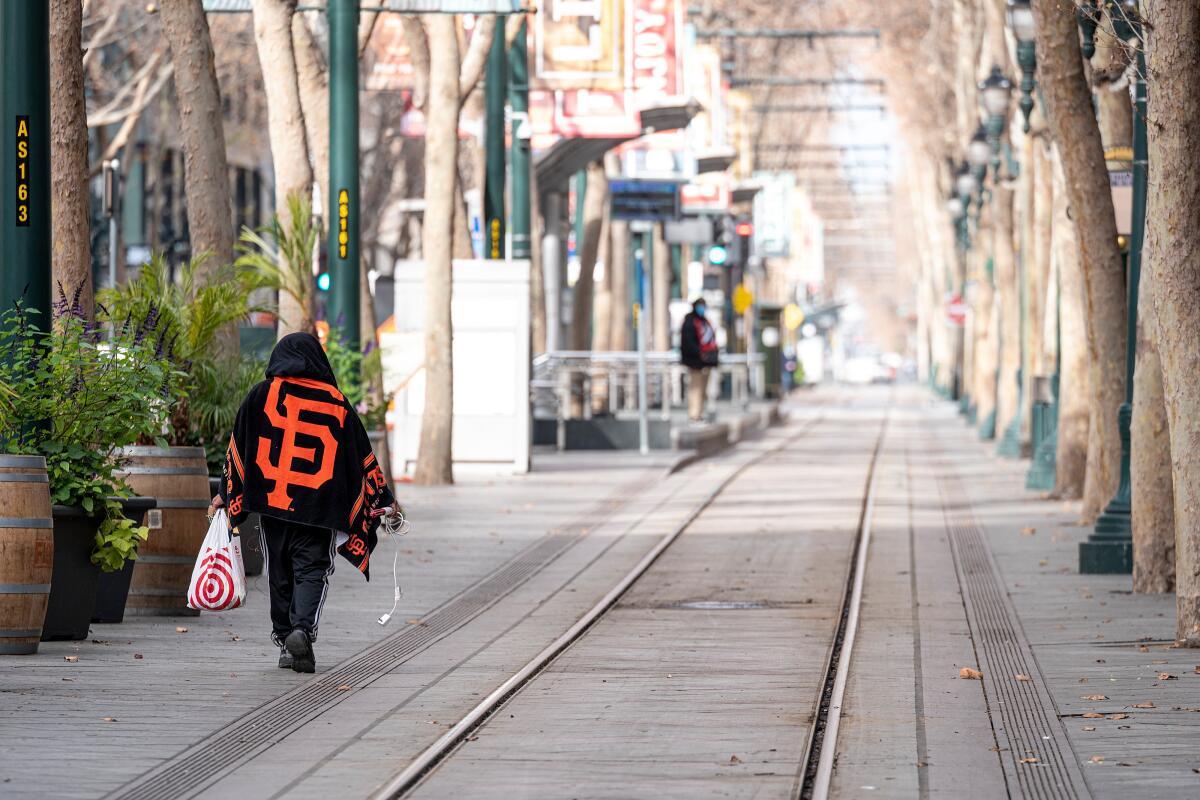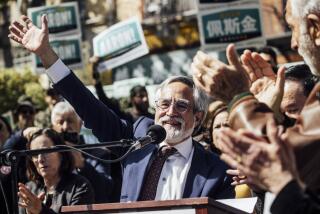Opinion: San Jose, the metropolis of the future? How a ‘forgettable’ city may become a national model

San Jose, the 10th-largest city in the country with more than 1 million residents, has long been described as America’s “most forgettable” major city. That caricature has persisted even though it sits at the heart of one of the world’s most mythologized subcultures, Silicon Valley. The city is home to the headquarters of Adobe, Zoom, EBay and, in the future, Google’s largest campus.
Soon, San Jose may shed its forgettable image. In a region that is the poster child for NIMBYism, San Jose is one of the only cities with the politics necessary to build dense, sustainable housing, providing a model for progressive urban development policy.
Sprawl has been the dominant development pattern across California for decades. In 1920, San Jose was 17 square miles. By 1970, it was 120 square miles, its expansion fueled by highways and developers covering farmland with a sea of single-family homes linking San Jose to nearby towns such as Cupertino and Sunnyvale. This growth model has resulted in a statewide housing shortage of 2.5 million units and exorbitant home prices.
The housing crisis grew so acute that the state Legislature enacted a series of housing laws, including laws to fast-track affordable housing (SB 35) and to allow four units on single-family lots (SB 9). While many California cities have resisted implementing the laws, San Jose has embraced them. According to Michael Lane, the state housing policy director at SPUR, California’s largest planning think tank, “the difference between San Jose and other places, is that there is political will to actually reduce dependence on cars, and approve new housing.”
San Jose is moving toward densification in part because sprawl is not only bad for the environment, it is also expensive. The city has long struggled to pay for delivering services such as policing and firefighting over such broad territory. As cities face austerity budgets coming out of the pandemic, attracting new residents to downtown is key to balancing the budget.
Construction financing can still prove challenging, but San Jose’s policy environment is primed for building. While cities in the rest of the Bay Area tend to be zoned for low-rise development, San Jose’s downtown is zoned for high-rise buildings. And taking a lesson from cities such as Barcelona and Paris, San Jose has adopted an “urban villages” strategy, rezoning the sprawl that extends from downtown with the intent of fostering a network of additional, mini urban centers.
While permitting in most major cities is notoriously labyrinthine, San Jose has expedited the process for a range of housing forms. If you want to build an accessory dwelling unit in your backyard, the city has pre-approved vendors and will issue you a same-day permit.
San Jose has said it will also launch a streamlined approval process for infill housing. For larger stand-alone projects, the city has conducted a blanket environmental impact review that pre-approves over 14,000 new homes, so that each developer does not have to run its own study. Practically, that means large projects in San Jose can be permitted in as little as six months, whereas permitting often takes years in the surrounding cities.
In 2022, San Jose became the largest U.S. city to drop minimum parking space requirements for new housing developments, a priority for transit advocates nationally. In 2021, the city approved revised plans for Diridon Station — where Amtrak, BART, Caltrain, high-speed rail, and other forms of transit are slated to meet — a project that local leaders describe as the West Coast’s Grand Central.
More than 25 buildings are planned for downtown San Jose, anticipating future growth. All must be constructed under a “reach” energy code with strict efficiency requirements, to eliminate dependence on fossil fuels. Housing must be all-electric (yes, that means induction stoves), and the city offers a TotalGreen plan, where residents can opt to only pull clean electricity for a modest price premium.
Last month, Nabr, a housing company I helped start, received approval from San Jose to construct two sustainable apartment buildings in the heart of the city. Designed by the Danish architect Bjarke Ingels, these Scandinavian-inspired timber towers will be accompanied by a plaza with public programming and improvements to the adjacent bike lanes.
Much of the development is planned in and around SoFA (South of First Area), San Jose’s main retail corridor during its agrarian boom years. SoFA has preserved its Spanish-era streets, with tree-lined sidewalks, and a vintage streetcar. Known as “Silicon Valley’s Creative District,” SoFA is now home to the types of small businesses that were pushed out of San Francisco. In 2016, they formed the SoFA Partnership, which sponsors public art and South First Fridays, when galleries stay open at night.
There has been a lot of talk in the Bay Area that it’s time to build. Although there is still work to be done to translate policy into funded projects, San Jose is getting started. Perhaps it will one day outshine San Francisco, its smaller yet more illustrious cousin. You may leave your heart in San Francisco, but if you care about the future, you should know the way to San Jose.
Cara Eckholm helped start Nabr, a company building housing in downtown San Jose, and is a visiting scholar at Cornell Tech’s Urban Tech Hub.
More to Read
A cure for the common opinion
Get thought-provoking perspectives with our weekly newsletter.
You may occasionally receive promotional content from the Los Angeles Times.










